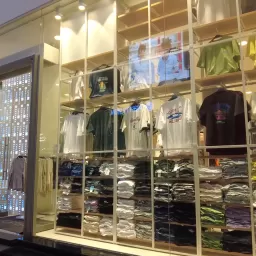Textiles And Fabrics
Textiles and fabrics play a crucial role in the world of fashion and are integral to the creation of clothing, accessories, and various other products
 Clothing & Accessories:
The Clothing & Accessories industry encompasses the production, manufacturing, distribution, and retail of apparel, fashion accessories, and related products.
Clothing & Accessories:
The Clothing & Accessories industry encompasses the production, manufacturing, distribution, and retail of apparel, fashion accessories, and related products.
Textiles and fabrics play a crucial role in the world of fashion and are integral to the creation of clothing, accessories, and various other products. The choice of fabric not only affects the appearance of a garment but also influences its comfort, durability, and overall performance. Here’s an overview of common textiles and fabrics used in the fashion industry:
-
Cotton:
- Properties: Breathable, soft, and absorbent.
- Common Uses: T-shirts, denim, casual wear, and undergarments.
-
Linen:
- Properties: Lightweight, breathable, and has a natural texture.
- Common Uses: Summer clothing, shirts, and casual wear.
-
Wool:
- Properties: Insulating, moisture-wicking, and often warm.
- Common Uses: Sweaters, suits, coats, and winter wear.
-
Silk:
- Properties: Luxurious, smooth, and lightweight.
- Common Uses: Dresses, blouses, lingerie, and formal wear.
-
Polyester:
- Properties: Durable, wrinkle-resistant, and quick-drying.
- Common Uses: Activewear, outerwear, and various types of clothing.
-
Nylon:
- Properties: Strong, lightweight, and resistant to abrasion.
- Common Uses: Hosiery, activewear, swimwear, and outerwear.
-
Rayon:
- Properties: Soft, breathable, and drapes well.
- Common Uses: Dresses, blouses, and casual wear.
-
Spandex (Lycra or Elastane):
- Properties: Stretchy and elastic.
- Common Uses: Activewear, swimwear, and garments that require stretch.
-
Denim:
- Properties: Sturdy and durable.
- Common Uses: Jeans, jackets, and casual wear.
-
Velvet:
- Properties: Soft, plush, and luxurious.
- Common Uses: Eveningwear, accessories, and upholstery.
-
Chiffon:
- Properties: Sheer, lightweight, and drapes well.
- Common Uses: Evening dresses, scarves, and lingerie.
-
Satin:
- Properties: Smooth, shiny, and often has a glossy finish.
- Common Uses: Eveningwear, lingerie, and accessories.
-
Tulle:
- Properties: Sheer, lightweight, and often used for layering.
- Common Uses: Tutus, veils, and formal dresses.
-
Canvas:
- Properties: Heavy-duty and durable.
- Common Uses: Workwear, bags, and shoes.
-
Bamboo Fabric:
- Properties: Sustainable, soft, and breathable.
- Common Uses: Activewear, underwear, and casual wear.
-
Leather:
- Properties: Durable, flexible, and can have a variety of textures.
- Common Uses: Jackets, bags, shoes, and accessories.
-
Fleece:
- Properties: Soft, warm, and insulating.
- Common Uses: Jackets, sweatshirts, and cold-weather clothing.
-
Jersey:
- Properties: Stretchy and comfortable.
- Common Uses: T-shirts, dresses, and activewear.
The choice of fabric depends on factors such as the intended use of the garment, the season, and personal preferences for comfort and style. Designers often combine different fabrics to achieve desired textures, patterns, and functionalities in their creations. Additionally, sustainable and eco-friendly fabrics have gained popularity as the fashion industry becomes more conscious of environmental impact